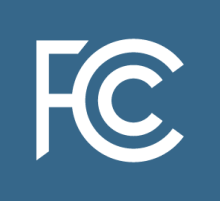
Fast, affordable Internet access for all.

The ongoing Covid-19 pandemic has highlighted the yawning gaps in broadband access throughout the country. Yet the Federal Communications Commission (FCC), in its 2020 Broadband Deployment Report released on April 24, found that “advanced telecommunications capability is being deployed on a reasonable and timely basis,” in effect turning a blind eye to the students parked outside libraries to access Wi-Fi, housebound seniors cut off from telehealth services, and struggling businesses left behind by the economy’s move online.
The agency came to this conclusion despite years of concern over how the FCC’s flawed data collection method systematically overstates broadband coverage. “We need to do a better job collecting data,” FCC Chairman Ajit Pai admitted nearly three years ago, adding, “It’s often said that you can’t manage what you can’t measure.”
2020 Report Lacks 20/20 Vision
Every year, the FCC must report on the expansion of Internet access in the country and determine whether broadband is being deployed in a “reasonable and timely fashion.”
In this year’s report, the FCC said, “Given the compelling evidence before us, we find for the third consecutive year that advanced telecommunications capability is being deployed on a reasonable and timely basis.” As support, the FCC noted:
The number of Americans lacking access to fixed terrestrial broadband service at 25/3 Mbps continues to decline, going down by more than 14 percent in 2018 . . . The vast majority of Americans — surpassing 85 percent — now have access to fixed terrestrial broadband service at 250/25.
This is a bold claim, considering the FCC has a tenuous understanding of where broadband is actually available. Everyone, from Congress and state governments to FCC commissioners themselves, agrees that the agency’s current method of collecting coverage information, Form 477, routinely exaggerates broadband availability. Since access is reported by census block, an entire block is considered served if only one house has Internet access. Furthermore, companies self-report the data with limited oversight, which lets providers mistakenly claim to serve millions more people than they really do. Even large companies, like AT&T, struggle to accurately report coverage.
FCC commissioners acknowledge the failings of Form 477 and last year issued the Digital Opportunity Data Collection Report and Order to update data collection methods. Commissioner Brendan Carr said at the time [pdf]:
The FCC created the form almost 20 years ago . . . Back then, less than half of Americans had Internet access at home, and almost all of those were on dial-up. Yet today, we’re still using substantially the same form to assess the deployment of networks that weren’t imagined at the time.
Because of these shortcomings, the FCC’s 2020 report found that “only” 18 million Americans lack access to broadband while recent analysis from BroadbandNow put the number at closer to 42 million. And last year, Microsoft determined that almost 163 million people in the US don’t connect to the Internet at broadband speeds.
Commissioners, Critics Challenge Report Conclusion
Not all FCC commissioners agreed with the decision to label the pace of broadband deployment adequate. Commissioners Jessica Rosenworcel and Geoffrey Starks both issued dissents. In her statement [pdf], Commissioner Rosenworcel called the report “baffling” and said it, “ignores the lived experiences of so many people struggling to get access to the broadband they need right now for work, education, healthcare, and more.” In addition to the FCC’s flawed data, Rosenworcel pointed to the agency’s failure to consider access to faster speeds, broadband affordability, and Americans’ digital literacy.
Broadband advocates echoed Rosenworcel’s concerns. In a press statement, Gigi Sohn, Distinguished Fellow at the Georgetown Law Institute for Technology Law & Policy and a Benton Institute Senior Fellow, argued that the FCC’s conclusion “defies reality,” saying:
Over the past six weeks it has become painfully apparent to the press, policymakers and the general public that tens of millions of Americans don’t have access to high-speed broadband Internet service. Yet Chairman Pai has decided that it’s time to take a victory lap even as millions of children cannot do their schoolwork, workers cannot telecommute and families cannot connect to friends, neighbors or each other during the COVID-19 pandemic.
Our own Christopher Mitchell, Director of the Community Broadband Networks Initiative, said in a recent press release that this report is more evidence of the FCC’s neglect:
This month, the FCC’s Connect America Fund is giving millions of dollars to bankrupt companies like Windstream and Frontier to deliver obsolete Internet access that is slower than the Commission’s own outdated definition of broadband. It is spending $120 million on satellite subsidies that make it harder to deploy broadband in rural areas.
He concluded, “The FCC has failed America.”
View PDF's of the FCC's report, Roseworcel's dissent, and Carr's statement below.
